Ijen Crater: Known for its blue flames and sulfur mining
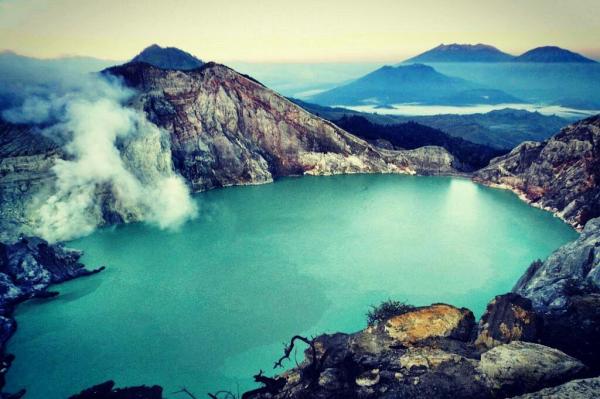
Discovering Ijen Crater: A Guide to the Best Things to Do in Indonesia's Most Famous Volcano
Ijen Crater, located in East Java, Indonesia, is one of the most spectacular and active volcanic regions in the world. Famous for its striking turquoise acidic lake, mesmerizing blue fire, and sulfur mining activities, the Ijen Crater is a must-visit destination for nature lovers, adventurers, and those interested in unique geological phenomena. This article will take you through the various things you can do in Ijen Crater, as well as the essential tips for making the most of your visit to this incredible place.
1. Hiking to the Ijen Crater Summit
One of the primary attractions of Ijen Crater is the challenging yet rewarding hike to the summit. The trek takes you through dense jungle and rocky terrain, with the final ascent leading to the rim of the crater, where you can witness the stunning sights below.
The Hike:
- Duration: 3-4 hours (depending on fitness level)
- Difficulty: Moderate to challenging, with steep sections, loose rocks, and occasional sulfur fumes.
- Start Time: The most common time to begin the hike is around midnight to catch the blue fire phenomenon and sunrise. The hike starts at the Ijen Paltuding basecamp.
At the summit, the panoramic views of the Ijen Crater lake and surrounding volcanic landscape are breathtaking. The lake, with its vivid turquoise color, is one of the largest acid lakes in the world.
2. Witnessing the Blue Fire Phenomenon
Ijen Crater is one of the few places in the world where you can witness the rare and spectacular phenomenon known as "blue fire." This fiery blue glow is caused by the combustion of sulfuric gases that seep out of cracks in the crater at night, igniting in the presence of oxygen.
Best Time to See Blue Fire:
- Night-time: The blue fire is most visible in the early hours of the morning before sunrise, making the midnight hike particularly special.
- Duration: It can last for 30 minutes to 1 hour, depending on the weather and sulfur activity.
The blue flames, especially when reflected on the sulfur-laden rocks, create an ethereal scene that is often described as otherworldly. Make sure to bring a headlamp or flashlight for your hike down the crater to safely navigate in the dark.
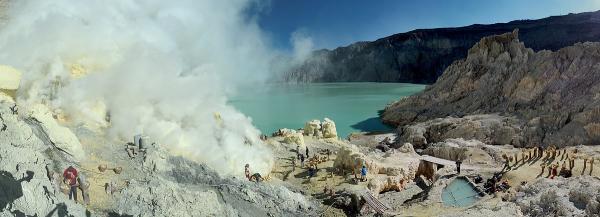
3. Exploring the Ijen Crater Lake
Once you've witnessed the blue fire, you can descend further into the crater to view the Ijen Crater Lake. The lake’s acidic waters, with a pH level of around 0.5, are incredibly acidic, and their bright turquoise color contrasts sharply with the stark volcanic landscape.
Activities:
- Photography: The lake’s unusual color and surrounding sulfur vents make for extraordinary photo opportunities, especially during the early morning when the mist is still rising off the water.
- Viewing from the Rim: You can hike along the crater rim for an unobstructed view of the lake and its surroundings.
Be cautious when getting too close to the lake, as the sulfuric fumes can be harmful, especially for those with respiratory conditions.
4. Witnessing the Sulfur Mining Activity
Ijen Crater is famous for its sulfur mining, where miners labor under dangerous conditions to extract sulfur from the crater. These miners carry large baskets of sulfur up the steep incline of the crater to sell for industrial purposes.
Things to Know:
- The Mining Process: The miners break the sulfur from the walls of the crater using basic tools, then transport it in heavy baskets. The sulfur is often red-hot when they collect it, adding to the difficulty of the task.
- Interact with the Miners: While it is important to respect the hard work and dangerous conditions of the miners, visitors can observe this activity up close. Many of the miners are open to brief interactions and will share their stories.
Although the sulfur mining is a fascinating spectacle, it is important to keep in mind that the miners work in hazardous conditions, and the air quality can sometimes be very poor, so always wear a mask or respirator if you're getting close.
5. Enjoying the Surrounding Scenic Views
Apart from the main activities around Ijen Crater, the surrounding area offers lush natural beauty and scenic views. The region is home to coffee plantations, forests, and tranquil villages.
Things to Do:
- Coffee Plantation Tours: The Ijen area is known for its rich coffee-growing region. You can visit local plantations and take guided tours to learn about the coffee production process, from cultivation to brewing.
- Photography and Scenic Views: Take time to explore the nearby forests and hills. The view from various vantage points around the crater, especially during sunrise, is absolutely stunning.
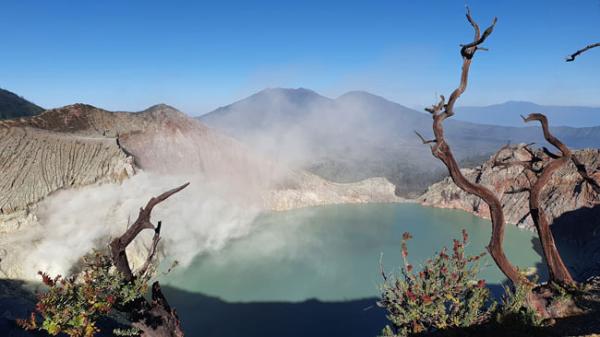
6. Visiting Nearby Destinations
If you have more time to explore the East Java region, there are several notable destinations that can be easily added to your itinerary:
- Banyuwangi: The town near Ijen Crater is a hub for travelers, offering access to nearby attractions like Bali (just a short ferry ride away), and natural wonders like the Baluran National Park.
- Baluran National Park: Often called the "African Savannah of Java," this park is home to a variety of wildlife, including wild cattle, deer, and buffalo, as well as beautiful savannah landscapes.
- Mount Raung: If you're looking for another volcanic adventure, the nearby Mount Raung offers treks and a chance to explore a more rugged volcanic terrain.
7. Safety and Environmental Considerations
When visiting Ijen Crater, safety and environmental conservation are essential to ensure that both visitors and the site itself are protected.
Safety Tips:
- Sulfur Fumes: The sulfuric fumes in the crater can be overwhelming and dangerous. Be prepared by wearing a mask or respirator. If you're not carrying your own, you can buy or rent one at the basecamp.
- Hiking Hazards: The trek to the summit involves steep ascents, loose gravel, and sometimes, slippery paths. Wear sturdy hiking boots or shoes with good grip to avoid accidents.
- Acid Lake: The acidic lake in the crater is dangerous to touch or get too close to, as the water can cause severe burns. Do not attempt to swim in the lake, and avoid venturing too close to the water's edge.
Environmental Impact:
- Avoid Littering: As with any natural site, it’s essential to avoid littering and to take all your trash back with you. The delicate ecosystem around Ijen Crater is vulnerable, and preserving its beauty is vital for future generations.
- Respect the Miners: Be mindful of the miners who work in hazardous conditions. It's important not to get too close to them while they work, and avoid disrupting their labor for the sake of a photograph or video.
8. Best Time to Visit Ijen Crater
Ijen Crater can be visited year-round, but the experience varies depending on the season. Understanding the best times to visit can help you make the most of your trip.
Peak Season (July–August):
- During the dry season, particularly from July to August, the weather is generally more stable, with fewer rain showers. However, this is also the peak tourist season, meaning that you might encounter larger crowds and higher accommodation prices.
Off-Season (November–March):
- The off-season offers fewer crowds and lower prices, but it also comes with a higher chance of rain. The rainy season may make the trails slippery and dangerous, and the visibility for viewing the blue fire and the crater lake might be compromised.
Best Time for Blue Fire Viewing:
- Nighttime: The best time to see the blue fire is in the late night or early morning hours before the sun rises. This period offers the clearest and most visible blue fire, which is an unforgettable experience.
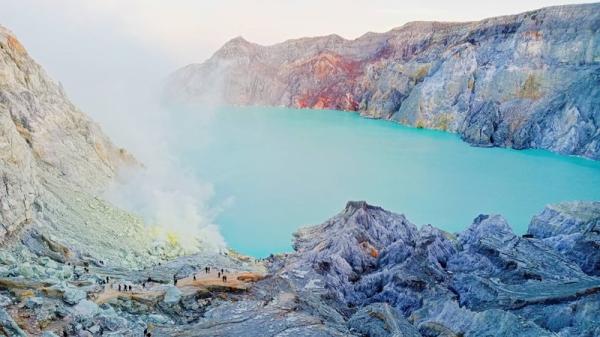
9. Photography Tips for Capturing Ijen Crater’s Beauty
Ijen Crater offers some of the most photogenic landscapes in Indonesia. If you're a photography enthusiast, here are some tips to help you capture the beauty of this unique environment.
Blue Fire Photography:
- Use Long Exposure: To capture the blue fire, use a long exposure technique (several seconds to a minute) to create a glowing effect. A tripod is essential for stabilizing your camera.
- High ISO: Since the blue fire is best viewed in low light conditions, adjusting your camera settings to a higher ISO will help you capture more light and detail.
- Lighting Considerations: Use a headlamp or flashlight to illuminate your surroundings, but avoid shining it directly on the blue fire to prevent spoiling the effect.
Crater Lake and Sunrise Photos:
- Golden Hour: For stunning shots of the Ijen Crater lake, visit during the early morning hours just before sunrise. The soft light will create magical reflections on the turquoise lake.
- Wide-Angle Lens: To capture the grandeur of the crater, a wide-angle lens will help you take in the vast landscape. This lens will also be useful for group photos.
Environmental Portraits:
- Sulfur Miners: If you're interested in photographing the sulfur miners, be respectful and ask for permission. Focus on capturing the hard work and determination of the miners, but avoid getting in their way or posing them for photos.
10. Accommodation Options Near Ijen Crater
While Ijen Crater is a popular day-trip destination, there are several nearby accommodation options for those looking to stay overnight. Staying near the crater will allow you to rest and acclimate before your hike.
Budget Accommodation:
- Homestays: The small villages around Ijen Crater offer homestays that are a great budget-friendly option. These offer a more authentic experience and allow you to interact with locals.
- Guesthouses: You can find budget guesthouses in nearby towns like Banyuwangi. These often provide basic amenities and are a good starting point for your trip to the crater.
Mid-range Accommodation:
- Ijen Resort & Villas: A more luxurious option located near the crater. It provides comfortable rooms, beautiful views, and access to tours around the crater. It’s perfect for those looking for a mix of comfort and adventure.
- Catimor Hotel: A comfortable mid-range hotel in the area, offering modern amenities and an ideal base for hiking Ijen Crater.
Luxury Accommodation:
- Gambir Swamp: If you're looking for an upscale experience, the Gambir Swamp resort offers exclusive rooms with scenic views of the surrounding area. It's a great choice if you want to experience the beauty of the region in comfort.
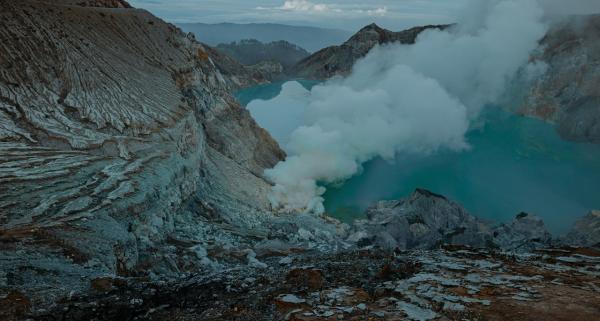
11. Cultural and Historical Significance of Ijen Crater
Ijen Crater holds not only a geological and natural significance but also a cultural and historical one.
Cultural Importance:
- Sulfur Mining History: The sulfur mining activity at Ijen has a long history, dating back to the Dutch colonial period. Today, the miners use traditional methods that have been passed down through generations. Visiting the crater gives you insight into the struggles and resilience of the local community.
Geological Significance:
- Active Volcano: Ijen Crater is part of a larger volcanic complex and is an active stratovolcano. The crater itself is a result of continuous geological processes that have shaped the land over centuries. The presence of the blue fire phenomenon is a testament to the ongoing volcanic activity beneath the surface.
Spiritual Beliefs:
- Local people believe that Ijen Crater is sacred and holds spiritual significance. Some local communities perform rituals to honor the spirit of the volcano, seeking blessings for safety and prosperity.
12. Alternative Activities in the Ijen Region
While Ijen Crater is the main attraction, the surrounding region offers additional activities that can enrich your trip.
Kawah Wurung:
- A less-known volcanic site located nearby, Kawah Wurung offers a serene environment with lush greenery and a lesser-crowded atmosphere. It’s perfect for those looking for a more tranquil volcanic experience.
Baluran National Park:
- Just a short drive away from Ijen, Baluran National Park is a haven for wildlife enthusiasts. Known as the "African Savannah of Java," the park is home to a variety of animals, including wild cattle, buffalo, and exotic birds. It also has stunning views of the savannah and Mount Baluran.
Taman Sari Waterfall:
- Taman Sari Waterfall, located near Banyuwangi, is a beautiful spot for a peaceful retreat. Surrounded by lush forest, it offers a great spot for relaxation after your Ijen Crater adventure.
Tips for Visiting Ijen Crater
- Prepare for the Weather: Temperatures in the Ijen area can be cold, especially during the early morning hours of the hike. Bring layers of clothing, a jacket, and gloves.
- Sulfur Masks: Due to the high concentration of sulfur in the air, it's advisable to bring a mask or respirator to protect yourself from inhaling harmful fumes. You can also rent masks from local vendors.
- Guided Tours: While it’s possible to hike Ijen Crater on your own, many visitors opt for guided tours. Local guides can enhance your experience with valuable information and help you navigate the challenging terrain.
- Physical Preparation: The hike is demanding, so it’s recommended to be in good physical shape if you plan to attempt the climb. It's not necessary to be an experienced hiker, but stamina and proper footwear are essential.
- Respect Local Culture: While visiting Ijen Crater, it’s important to respect the local customs and miners. Always follow the guidance of your guides and be considerate of the community working there.
Conclusion
Ijen Crater, with its otherworldly beauty and geological wonders, is a destination that offers a truly unique experience. Whether you're hiking to the summit to witness the blue fire, exploring the sulfur mining activity, or marveling at the stunning crater lake, there's no shortage of incredible things to do. By planning your visit carefully and being mindful of safety and environmental concerns, you can ensure that your time in Ijen will be both memorable and responsible. Add this incredible site to your travel bucket list—you won’t be disappointed!
No comments yet. Be the first to add a review.